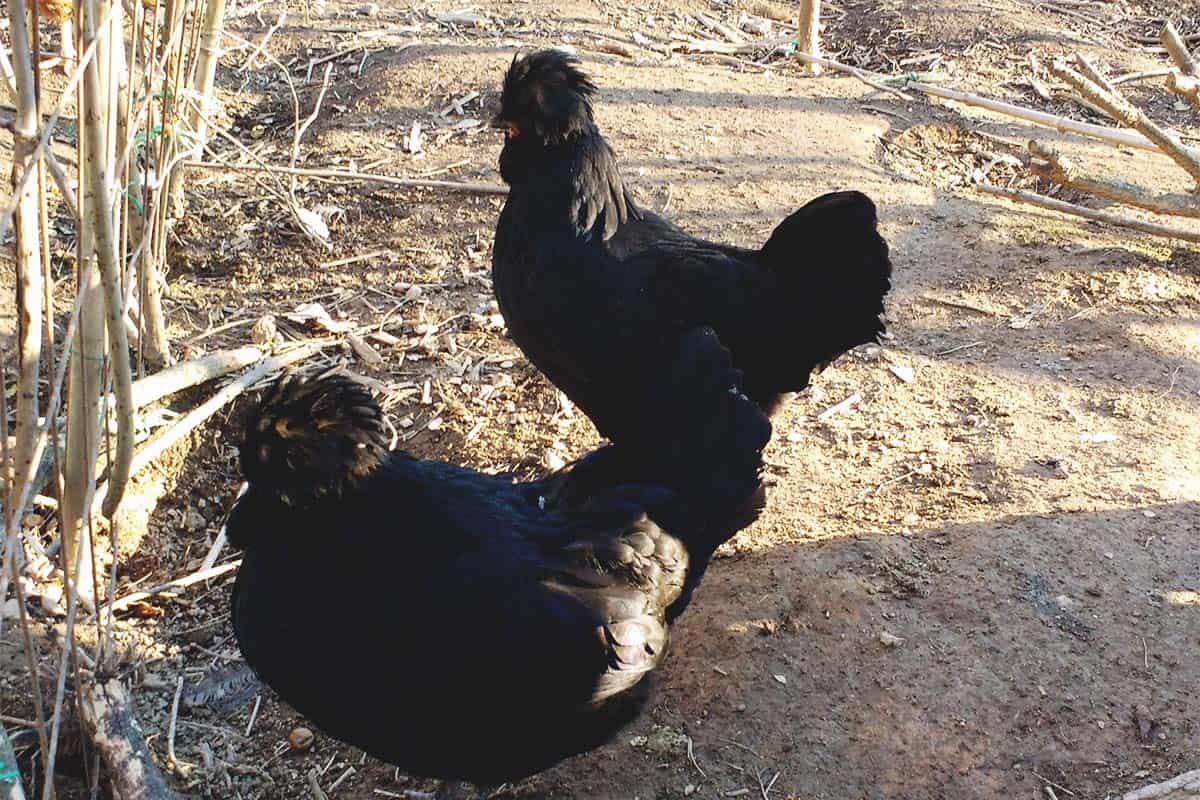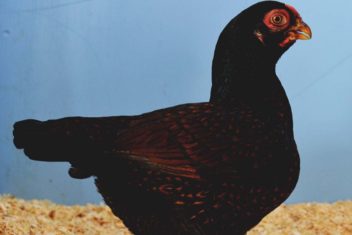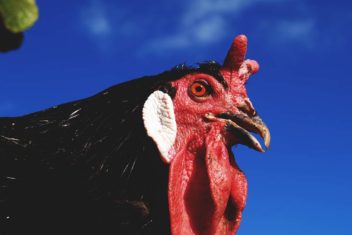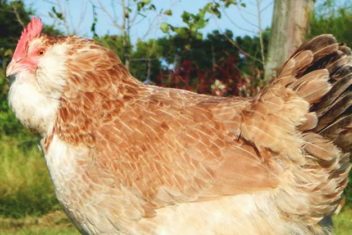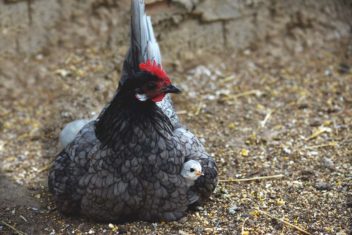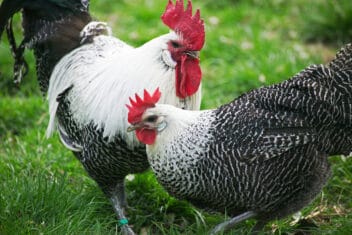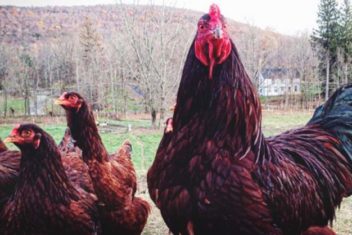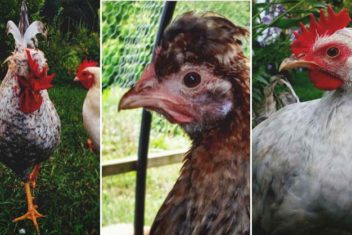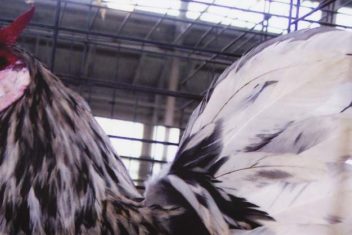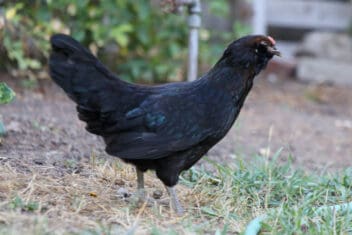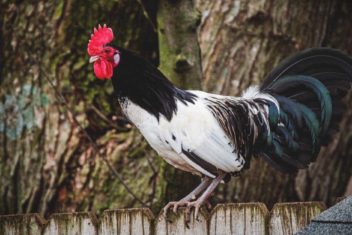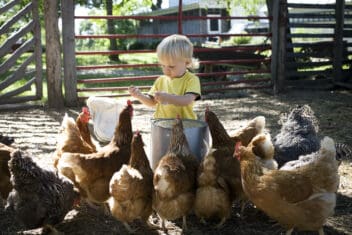The Crèvecoeur is an elegant breed, originally developed in France with the goal of creating a bird that produced tender meat.
The main uses for this interesting french bird are meat production and exhibition, with egg production being a lower priority for this chicken.
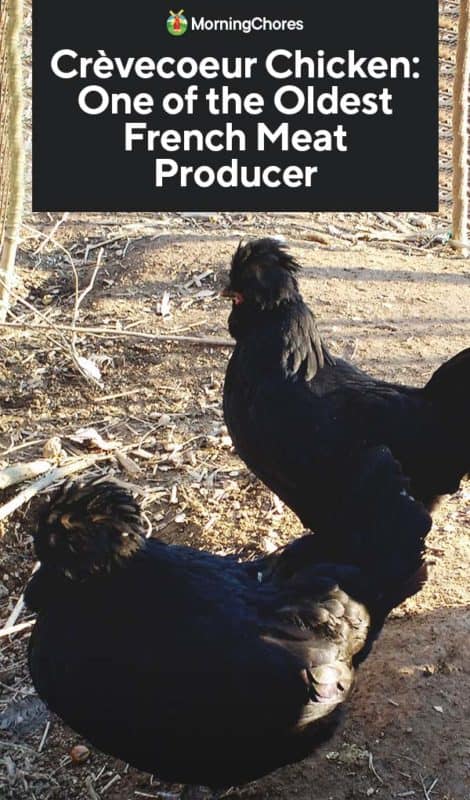
About Crèvecoeur Chicken
This beautiful, well-proportioned chicken is one of the oldest breeds developed in France.
In 1874, Crèvecoeurs were accepted into the Standard of Perfection with the American Poultry Association. Since then, the popularity of this breed has declined, leaving Crèvecoeurs a critically threatened breed that could be facing endangerment.
Crèvecoeur Characteristics
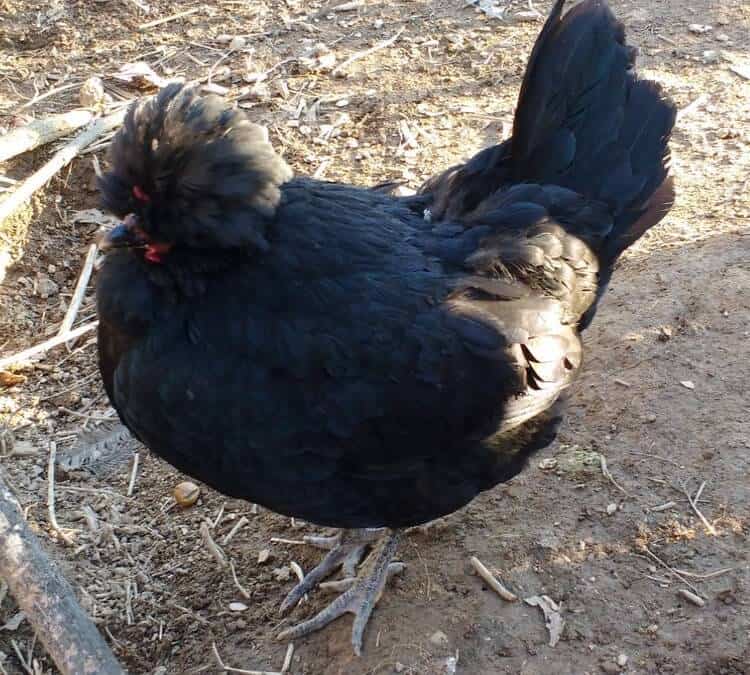
1. Size and Weight
Crèvecoeur is a mid-sized chicken with short legs. Hens will weigh in somewhere around 6.5 pounds. Roosters are naturally a bit larger, tipping the scales around 8 pounds. This chicken is classified as a dual-purpose breed, which generally means it’s a slightly larger bird.
2. Temperament
One thing you can count on with Crèvecoeurs is their sweet and docile personalities. If you put the time into raising chicks with lots of attention, you’ll likely have a very friendly adult chicken. Crèvecoeur hens are rarely inclined to sit on eggs to raise their own chicks, despite their caring personalities.
Another notable thing about Crèvecoeurs is their active dispositions. You won’t often see a Crèvecoeur sitting still, they love flitting about and scratching at whatever they take a fancy to.
3. Egg Production
Egg production is not the headliner of qualities for the Crèvecoeur. While these chickens do lay large white eggs, their laying schedules aren’t too frequent. You can expect an average of around 120 eggs from 1 hen in a year.
4. Meat Production
Since meat production is the main thing these birds were bred for, this is where they flourish. Although they are not the biggest birds out there and you will not have a surplus of meat, the meat will be very tasty. Crèvecoeurs have very white skin and breast meat along with dark leg meat.
Caring for Crèvecoeur Chickens
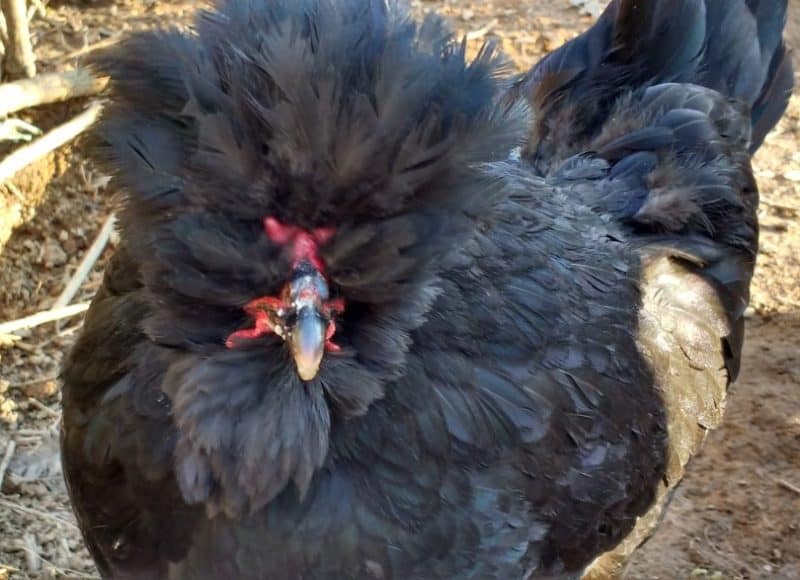
1. Feeding and Nutrition
Crèvecoeur chicks will do best by beginning their lives on a good quality chick starter. It’s generally best to keep your growing birds on a chicken starter for the first 8-12 weeks. Around the time your chickens are preparing their bodies for egg-laying, it’s a good idea to transition over to a good laying feed.
It’s a common necessity to have to supplement your laying hens with extra calcium if they aren’t receiving enough through their feed. Calcium supplements can be provided via eggshells that have had their membranes removed and then crushed up. Make sure they are well crushed to prevent an egg-eating habit from forming.
Crushed oyster shells are also a viable option when it comes to providing extra calcium.
2. Housing and Fencing
This is an excellent breed to keep if you don’t have much space, Crèvecoeurs are very content to live in confinement, unlike some more active breeds.
Inside your coop, provide 3-4-square feet of space per chicken to make sure everyone has room to sleep and escape from the elements.
For a run, always provide as much space as possible for your birds to stretch their wings and peck around. A minimum of 10-square feet per chicken is a good place to start when planning your run or figuring out how many birds can fit in your current one.
3. Health Issues and Care
Crèvecoeurs were bred for vitality! This hardy breed has no known health issues in their bloodlines. Of course, any chicken is prone to a myriad of different illnesses, but there doesn’t seem to be a hereditary issue.
One common thing to be on the lookout for with your birds is external and internal parasites. For internal parasites, treatment can usually be placed in the water to effectively treat the entire flock at once.
External parasites can be a bit more difficult to address because birds often have to be treated individually. Providing your birds with a good dust bathing spot will be very helpful in preventing a mite or lice outbreak.
4. Breeding
Due to Crèvecoeurs being a critically endangered breed, picking this chicken for your next breeding project would be a splendid idea. Luckily, Crèvecoeurs don’t sport outrageous or intricate feather patterns, which means it’s a little easier to breed this chicken up to the standard of perfection.
If you plan on hatching out chicks, you’ll need to invest in an incubator or acquire hens that are far more likely to go broody than Crèvecoeurs. When it comes to mothering capabilities, this breed just doesn’t quite fit the bill.
Breed Alternatives
1. Polish
One thing that catches the eyes of everyone when they first see the Crèvecoeur is the noticeable crest on top of its head. If you’re interested in a bird with an even larger head poof, look into the Polish chicken!
Polishes can be found in a much larger variety of colors, making them an eye-catching breed if you don’t like an all-black bird. Another thing to the benefit of Polishes is higher egg production compared to the Crèvecoeur.
Did You Know?
Crèvecoeur translates to “broken heart”, making this chicken the quintessential picture of a chicken from the country of love, France!
If you’re after an interesting addition to your dinner table, chicken run, or show bird lineup, Crèvecoeurs won’t disappoint you! You’ll certainly enjoy this quirky looking bird and the character they’ll add to your farm.
